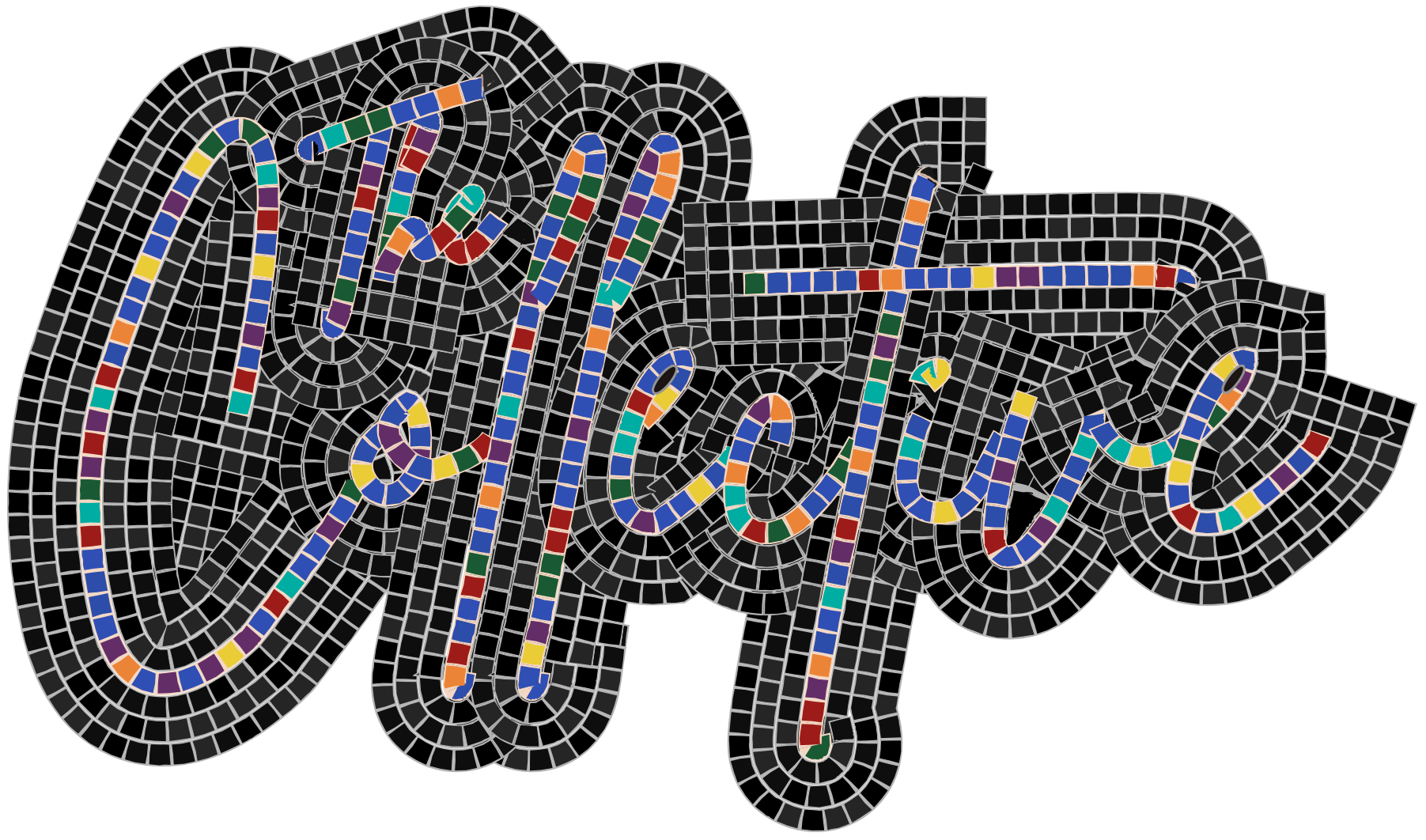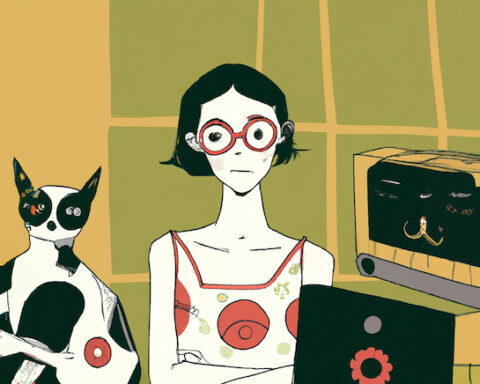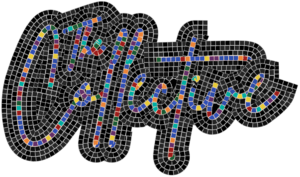“She—it?—sang…with smokey-dark sound, sultry phrasing and an alluringly understated seductiveness.”[1] An odd question to interject — it? — regarding a person singing, but, alas, here we begin. After attending a concert sung by Maria Callas, the long lauded — and, at the time of the performance, long dead — opera singer, New York Times critic Anthony Tommasini found himself questioning who or what it was that he had just seen. Had he just witnessed La Divina herself? Had this simply been a flat replication of Callas in her prime? Is a performance without consciousness a performance at all? Do the answers to these questions even matter?
The performance that spurred these questions was an early form of “Callas in Concert,” a Base Hologram™ production presenting a holographic rendition of the late Maria Callas in concert with a live conductor and orchestra — a production meant to seduce its audience to “surrender all notions of what is real and get lost in the magic of the iconic La Divina.”[2] Tommasini suggests that, while potentially verging on the absurd, this production found success because opera lovers tend to “dwell in the past,” nurturing an “obsessive devotion to dead divas and old recordings.”[3] Contrarily, I suggest that the production is successful because when it comes to the diva, opera audiences are not deterred by death at all. The diva cannot die — she transcends the body, living through the title bestowed upon her by her audience.
French Romantic Théophile Gautier writes, “Once a virtuoso singer has been judged a diva, that is all that needs to be said, at least for the audience that gives her that epithet.”[4] With this designation, the woman singing on stage is essentialized as an object for consumption. The diva becomes a thing to be admired, a distant, idealized woman bringing pleasure to a voyeuristic audience. Gautier calls this audience “a blind, passionate, and unrivaled cult” who love the diva not for who she is as a woman, because they do not know her, but rather for what she represents: the “unattainable” — beauty, talent, and sensuality out of reach, tantalizing from beyond the proscenium, to be seen but never touched.[5] The labor of the diva is to entice the audience, singing and moving on stage not as herself but as a conduit for the construct that has created her.
The question of what it means to be a singer — agency, objecthood, perhaps the effects of a somewhat sociopathic composer or director or two — on the opera stage has long been discussed. Such discussions always seem to interrogate whom or what a singer is allowed to be and how much of this being is the singer’s own. In his 2019 Opera Quarterly article “Casting Metal: Opera Studies after Humanism,” Christopher Morris concludes that opera’s “exceptional…capacity to generate and absorb networks of collaboration and co-production…depend upon, and in turn generate, an economy of meaning and materiality that spans generic borders.”[6] With this sentiment, I agree: these operatic qualities, as Morris calls them, are indeed at the will of society and the whims of power. But simultaneously, these qualities are also in a self-referential cycle which builds upon itself and, in turn, affects the society that has made its traditions possible.
I find that in my consideration of the construction and treatment of the diva, I am drawn to highlight prominent parallels to Michel Foucault’s “The Subject and Power” — perhaps if only to exercise my musings at hand. Mirroring this theoretical work, my objective is not to discuss power itself. Rather, I endeavor to discuss “the different modes by which…human beings are made subjects.”[7] Foucault presents these modes of objectification in three parts: first, the objectification of the productive subject; second, the objectification of the other-ed subject; and third, the subjectification and categorization of the self within the confines of societal classification. Following this model, I examine the ideological changes that the singing body undergoes when under the voyeuristic gaze of the audience. For instance, the title of “diva” comes to those singers who have been divorced from their humanity due to what is seen as their “otherworldly vocal power and beauty,” which makes them — in the eyes of their audience — more “goddess” than human woman.[8] In this way, the singer-become-diva does not deal in identity but rather in the societal classification considered by Foucault. For the singer, to be held in the gaze of the audience is to be held in the grasp of society and therefore subject to whatever social prescription the audience sees fit to put upon them.
Foucault’s modes of objectification give precedence for the singer as an ideological construct. Separated from the audience both physically by the proscenium and figuratively through the ideological fissure between reality and dramatization, the singer does not have a discursive space in society, and as such does not have the agency to participate in the defining of her own being. In my application of Foucault’s theoretical premise, I interrogate various interpretations of the diva, aligning her treatment by societal constructs of power with that of the Foucauldian subject.
I do not present my musings here as answers; answers to the many questions regarding the agency of singers and the singing body will take more than a few thousand words to parse out. Instead, this essay seeks a baseline for inquiry: the common understanding that we cannot go on discussing singers as has traditionally been done — in ignorance of the importance of personal agency — and instead must adopt a more holistic understanding of the ideological treatment of the singing body. When experiencing an opera, the audience witnesses much more than simply a character on stage. In witnessing someone singing a role, one takes in not only the production, plot, and music of the opera but also the singer themselves, interpreting each visual aspect of the singing body into a narrative based primarily upon perception. In light of this, I wanted to muse further upon that which is taken on by the singer in entering the field of opera — particularly for those who bear the mantel of “the diva.” Of course, the experience of every singer is based upon individual positionality, but the commonalities founded upon questioned personal agency for singing bodies have such breadth that this subject demands continued attention.
Mode I: Objectification of the Productive Subject
Foucault’s first mode of subject inquiry details the objectification of “the subject who labors, in the analysis of wealth and of economics,” and the further objectification of “the sheer fact of being alive in natural history or biology.”[9] In translating this mode of inquiry for the sake of the artistic realm, the subject must be classified for its use vis-à-vis spectacle; in this, the subject becomes the diva, her self-agency sterilized in favor of the character she represents. Presented upon the stage, the diva is used for her dramatic labor, “alive” in the history of the plot line. The singer’s individuality disappears, so that the audience might instead see the character fulfilling its own ambitions.
Heather Hadlock points out the paradoxical centrality of women in opera: despite the fact that women primarily drive the narratives of opera plots, “feminist perspectives on opera—by which I mean perspectives that analyzed, interrogated, and challenged the ideas about femininity, masculinity, sexuality, love, family, and authority upon which operas rely, and which operas have helped circulate and perpetuate—did not emerge until the late 1980s.”[10] While the diva was allowed to use her voice only to sing, her existence steered opera dramatically, sonically, and visually. The singer became objectified as the spectacle of the diva, deprived of human agency and removed from participation in societal dialogue. The diva is a construct of femininity built by her adoring fans to work at the behest of her director. She is not a woman but rather the idea of a woman. She is the subject of spectators, of composers, of critics — she exists because societal power has conjured her for its own entertainment. She is the product of societal ideation, objectified for the pleasure of her audience. In this way, the diva is a tool to be wielded.
Mode II: Objectification of the Other-ed Subject
The second mode of subject inquiry studies the objectification of the subject in what Foucault calls “dividing practices” — the subject is “either divided inside [herself] or divided from others.”[11] While the diva is indeed divided inside herself, existing at once as the woman she is and the character she portrays, a greater divide is opened between herself and society. Foucault offers examples of societal divide — “the mad and the sane, the sick and the healthy, the criminals and the ‘good boys’” — in various false dichotomies of good versus evil or normative versus non-normative.[12] The diva exists in a similarly false dichotomy: romanticized desire versus reality. The diva is everything the audience wants — a want of voyeuristic pleasure which, if entertained elsewhere, away from the safety of artistic dramatization, would be a societal faux pas.
Isabelle Moindrot describes the diva as “a mythical and eternally young creature untouched by time,” yet still centuries old and existing as the result of a “double identification process, involving first the character and the performer, and then the audience and its ‘idol.’”[13] This process puts up multiple walls between the singer and reality, both of which express Foucault’s second mode of subject inquiry: the singer is put first behind the wall of the character, existing to drive the plot of the opera and secondly behind the wall of her function as the “mythical idol” that is the diva.
The diva’s dressing room is a common setting for the building of these walls. Whether the dressing room exists in the reality of the opera house or in the dramatization of an opera plot, the room becomes a “theater within theater: a private room in a public place, a space the ordinary audience can only imagine and fantasize about.”[14] The fantasy of the diva thrives on the ability of the purportedly normal audience to look in on her in her unusual circumstances. The separation of the audience from the diva sublimates the audience’s desire as a societal norm; the longing of the audience for the fantasy of the diva is made allowable because within the opera house the diva is an object of art, not fetish. But regardless of the ameliorative aims of this contrived separation between the singer and reality, the fact remains that she does, indeed, exist as an object under the gaze of the voyeuristic eye.
Mode III: Subjectification of the Self
Foucault’s final mode of subject inquiry concerns “the way a human being turns [herself] into a subject.”[15] He chooses as his example “the domain of sexuality—how men have learned to recognize themselves as subjects of ‘sexuality.’”[16] The diva experiences a similar self-subjectification, which occurs in self-marketization. Singers are salespeople, marketing themselves as products for hire and consumption. In this way, they must become what the composer, the director, and the audience desires.
Karen Henson writes of the relationships Jules Massenet built with sopranos who performed his roles. Massenet made a habit of inviting six of his most prominent sopranos to co-autograph scores of his operas for favored, or otherwise important, audience members. Henson writes that this tradition seemingly began with Massenet’s 1885 Le Cid. What is of interest here is how soprano Fidès Devriès signed next to Massenet: not in her own signature, but “under her character’s name.”[17] In this way, Devriès separated herself from reality, consciously portraying herself as the diva rather than as a woman portraying a character.
Susan Rutherford writes of the marketization of the diva through images, citing the practice in which “famous singers were celebrated by often equally famous artists in paintings and lithographs.”[18] These images were not depictions of the woman as a singer; rather these images depicted “a particular interpretation” or “enhanced representation” of the woman as the diva.[19] The singer did not present herself to the world, because that was not what society wanted to see. The singer presented the diva — the object of desire that people wanted to experience from the comfort of their ticketed seats.
The artist formerly known as woman
Once held by the gaze of the audience, the singer loses their personal agency through commodification; and with this objectification…this product–ization…the singer becomes the diva, the fictitious object of desire meant to entice the audience into their seats. The diva is a productive subject objectified — doing the work of the composer, director, and opera house by playing the societal role she has been assigned. The diva is an other-ed subject objectified — existing in a dramatized space separated from the audience, allowing the audience to live out their fantasies through artistically and societally sanctioned voyeurism. The diva is a subjectification of the self — a singer who markets herself by donning the title and persona of the diva because she knows it is the way to succeed in the business of opera. Once she enters the realm of performance, the singer no longer exists as herself. She exists as the diva, living only in the minds of her audience.
The idea of the diva is held in the mind and projected upon the singing body; therefore, I chose to live in the theoretical realm instead of deflecting onto examples that further complicate the complex Geertzian webs of representation and association which already constitute opera. I initially planned to include images with this essay — sketches from the archives of the Metropolitan Opera detailing the fantastical beauty and perceived power of opera heroines; but upon further consideration, I realized that doing this would not provide examples for my argument and would not critique these “webs” so much as it would contribute to them.
As opera continues as a genre, people will continue to be conduits for its expression upon the stage, and it is the motives of such expression that we must question. What is being portrayed for the audience through the medium of the singing body? How does the audience actively participate in this signification process? What can the singing body itself tell us, even while the singer cannot express their own words? What associations do opera productions place upon singing bodies with their treatment of women who identify as and/or with demographics that have traditionally been mistreated within the opera genre? As the equitable representation of voices and bodies is fought for socially, the opera stage remains a microcosm of this battle — an arena for ethical conflict and through this, hopefully, an arena for societal growth.
[1] Anthony Tommasini, “What a Hologram of Maria Callas Can Teach Us About Opera,” The New York Times, January 15, 2018.
[2] Base Hologram, “Callas in Concert,” https://basehologram.com/productions/maria-callas.
[3] Tommasini, “What a Hologram of Maria Callas Can Teach Us About Opera.”
[4] Théophile Gautier in Isabelle Moindrot, “Mythologies of the Diva in Nineteenth-Century French Theater,” in Technology and the Diva: Sopranos, Opera, and Media from Romanticism to the Digital Age, ed. Karen Henson (Cambridge, UK: Cambridge University Press, 2016), 25.
[5] Gautier in Moindrot, “Mythologies of the Diva in Nineteenth-Century French Theater,” 25.
[6] Christopher Morris, “Casting Metal: Opera Studies after Humanism,” The Opera Quarterly 34, no. 1-2 (2015): 93.
[7] Michel Foucault, “The Subject and Power,” Critical Inquiry 8, no. 4 (1982): 777.
[8] Karen Henson, Opera Acts: Singers and Performance in the Late Nineteenth Century (Cambridge, UK: Cambridge University Press, 2015), 12.
[9] Foucault, “The Subject and Power,” 777.
[10] Heather Hadlock, “Opera and gender studies,” in The Cambridge Companion to Opera Studies, ed. Nicholas Till (Cambridge, UK: Cambridge University Press, 2012), 257.
[11] Foucault, “The Subject and Power,” 778.
[12] ibid.
[13] Moindrot, “Mythologies of the Diva in Nineteenth-Century French Theater,” 24.
[14] Moindrot, “Mythologies of the Diva in Nineteenth-Century French Theater,” 34.
[15] Foucault, “The Subject and Power,” 778.
[16] ibid.
[17] Henson, Opera Acts, 88.
[18] Susan Ruthorford, “‘Pretending to be Wicked:’ Divas, Technology, and the Consumption of Bizet’s Carmen,” in Technology and the Diva: Sopranos, Opera, and Media from Romanticism to the Digital Age, ed. Karen Henson (Cambridge, UK: Cambridge University Press, 2016), 75.
[19] Rutherford, “Pretending to be Wicked,” 75.
*Re-constructionist for cover image unknown







